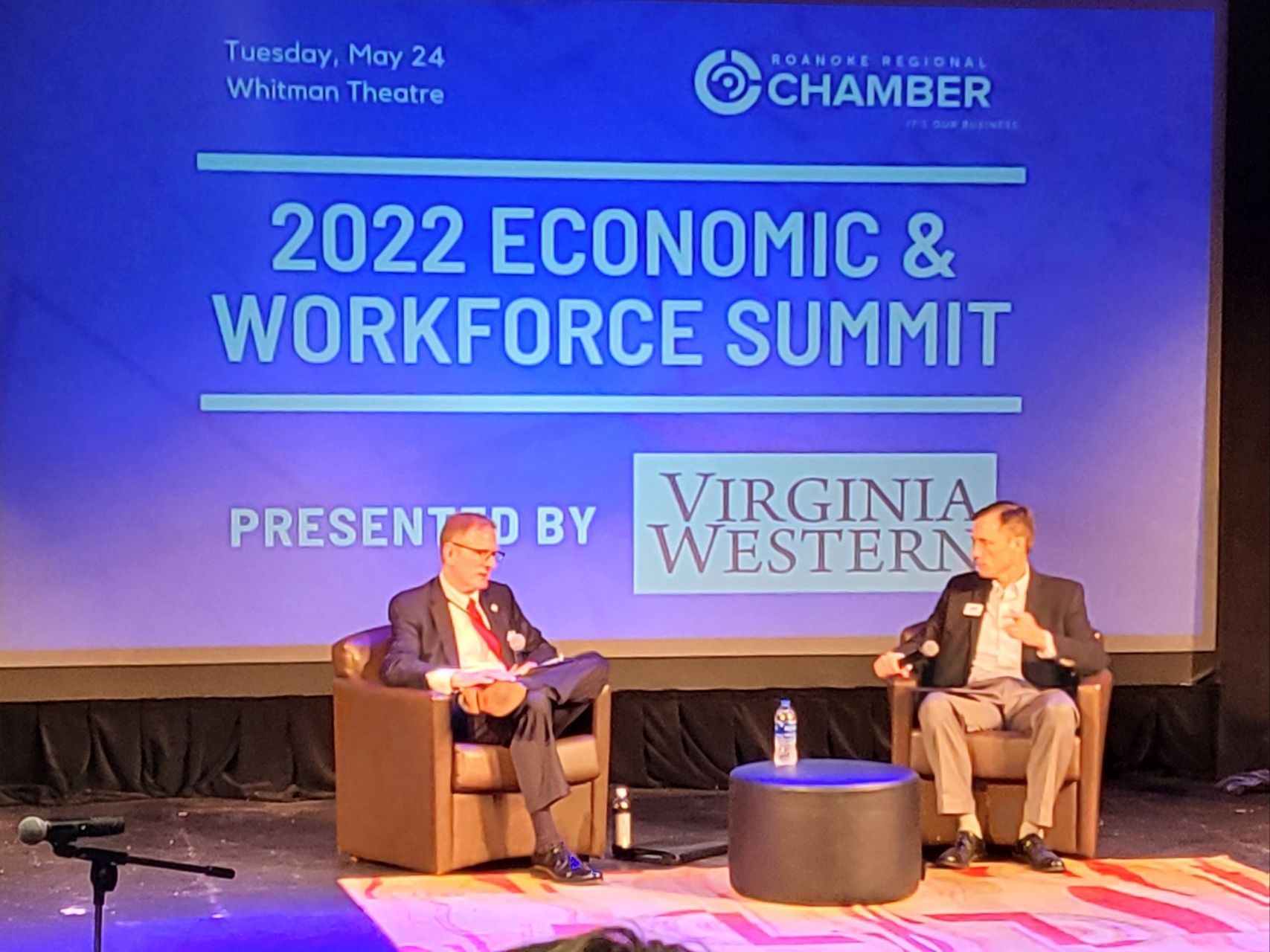On May 24th, I attended the 2022 Economic and Workforce Summit. This event was hosted by the Roanoke Regional Chamber of Commerce on the campus of Virginia Western Community College. The summit opened with a panel on economic and workforce trends and discussed the role of academic partnership in economic expansion. Afterwards, attendees chose two of three breakout sessions. I attended a deep dive on economic and workforce trends presented by Morgan Romeo and the workshop on Culture and Workforce retention by Mike Leigh. The afternoon wrapped up with Q&A session with Secretary Bryan Slater. Here are a few of my takeaways in regards to demographic landscape, workforce development, workforce readiness, and leadership development.
Why is economic and workforce development important?
Workforce development is one of the key drivers of new businesses to the region. As businesses enter the market, this in time, attracts new talent and supports retention of current talent in the region. Partnerships among the local public school system, private schools, colleges, universities, and businesses are vital to developing those talent pipelines to meet future business demands for our area. More than ever, those silos are breaking down. In one case, Virginia Tech and Virginia Western Community College graduates are essential to supporting Eldor’s manufacturing and innovation. There are many more examples, I can think of where workforce development services work to facilitate these partnerships. I think of my prior workforce development work in technology training, staffing teams, and re-entry services. I gained a deep understanding on how facilitating the process support these companies.
Data Demographics: What matters?
There are a number of metrics that the region uses to measure success. However the one that really matters is simply: the number of people employed. As we evaluate the unemployment rate, we must realize that is only providing one part of the picture. This represents the number of people actively looking for work. It is essential take a look at the number of people participating in the labor force. This is the combination of the number of people actively looking for work and the number of people who are working. What is important to notice is that this number has been declining over the last 10 years. It is not simply that people are not wanting to work. There are a number of factors leading to this decline.
First we have an aging population. People are simply retiring. A study by EMSI indicated the pandemic accelerated the retirement of many workers. There has been much fear of returning to the workplace among this demographic.
Secondly, the region has to compete more strongly to retain younger individuals. The greatest exit are from those between two age groups with a range of 35-54. Those who have children within this age range will have little to no connection to the region, and without exceptional jobs and an exciting quality of life, they will have no reason to return and establish roots in the area.
Third medium wage jobs have improved, while high wage jobs have not. Those who are looking to increase their income will look elsewhere to do so, or create their small businesses to supplement the income they desire. Furthermore, even lower wage jobs have not returned. Partially due to businesses closing and higher base wage demands. Without staff, work cannot be carried out, and businesses cannot generate revenue. Because these represent a larger portion, it’s impact has been greatly felt.
According to Morgan Romeo, Executive Director of Virginia Career Works- Blue Ridge, people have needed to adapt to the ever-changing landscape.
- Women left the workforce for childcare purposes and many families realized it is possible to survive on a single income.
- Many people developed new skills and hobbies that they are turned into income.
- Others are taking on part-time opportunities in the gig economy and making sufficient income to not return to full-time employment.
- Yet other realized a greater quality of life and could spend more time with friends and family.
Workforce Development
Businesses should be pragmatic as they build their labor force. Most of the the workforce consists of individuals who did not attend a 4-year university. Requiring stringent educational credentials when a 3-month on-the-job training will suffice, can affect business’s ability to attract and promote from within a high potential talent pool. One must take a lean approach and leverage the talent within. Businesses are encouraged to develop jobs descriptions that reflect the value of that position and demonstrates, clearly, the expectations of the work.
Companies should look long term to see what technological advancements are occurring in their respective industries. Using that knowledge, they will be better able to develop innovative new products and services and create opportunities for the future employees. The region’s high growth occupations are in: advanced manufacturing, healthcare, cybersecurity, information technology, and biotechnology/life sciences. While Roanoke Valley is the the Mountain Biking Destination of the East Coast, how can we become the “Silicon Valley” of the east coast too?
Business operations are changing . Leaders are learning that they must consider flexibility in working hours and offer remote work opportunities. Other considerations may include offering hiring and retention bonus, shortening the work week, mapping out career pathways, and access funding for upskilling current workforce.
The panelists moderated by Milan Hayward, agreed that businesses should engage the education system before the need for labor. By building solid relationships with these academic institutions, they will be better able understand business needs and prepare students for future opportunities. These academic partners can direct leaders to resources that support internships, apprenticeships and job opening visibility through job boards.
Workplace Readiness
One of the major challenges is getting people into the workforce pipelines. This may be due to poor awareness of these pathways’ infrastructure. Companies have to sell their organizations as a great place to work, grow professionally, and build bonds overtime. They must engage future employee earlier and educate them on the pathways and key skills they must learn if they want to be success member of the company eventually.
Another research report by McKinsey & Co. , indicated that following through that training pipelines is a challenge as well. So support is needed to help motivate and encourage them to continue pursuing high impact credentials if they are really a necessary requirement for a job. On top of technical expertise, enhancing ones communication and critical thinking skills is important to employers.
Leadership Development
Mike Leigh, CEO of OPX Solutions indicated that 58% of mangers have no formal training in their leadership roles. Soft skills foundations is not only for employees, but for managers as well. It is a misconception that compensation is the only reason candidates leave. They leave because they desire to have deep competence in a particular area. They want to have a say in how work is selected, performed and carried out. They want meaningful work. They seek balance in all areas of their lives. Managers must understand this and develop the skills they need to take the region’s companies into the next era.
Final Thoughts
Overall, it was a very informative event and great way to stay connected to work within the region. One final note, Leadership Roanoke Valley Class of 2023 is seeking it’s next cohort. I, personally, found it to be an absolutely impactful leadership development program. Well worth checking out! Nominate someone by May 31st!


